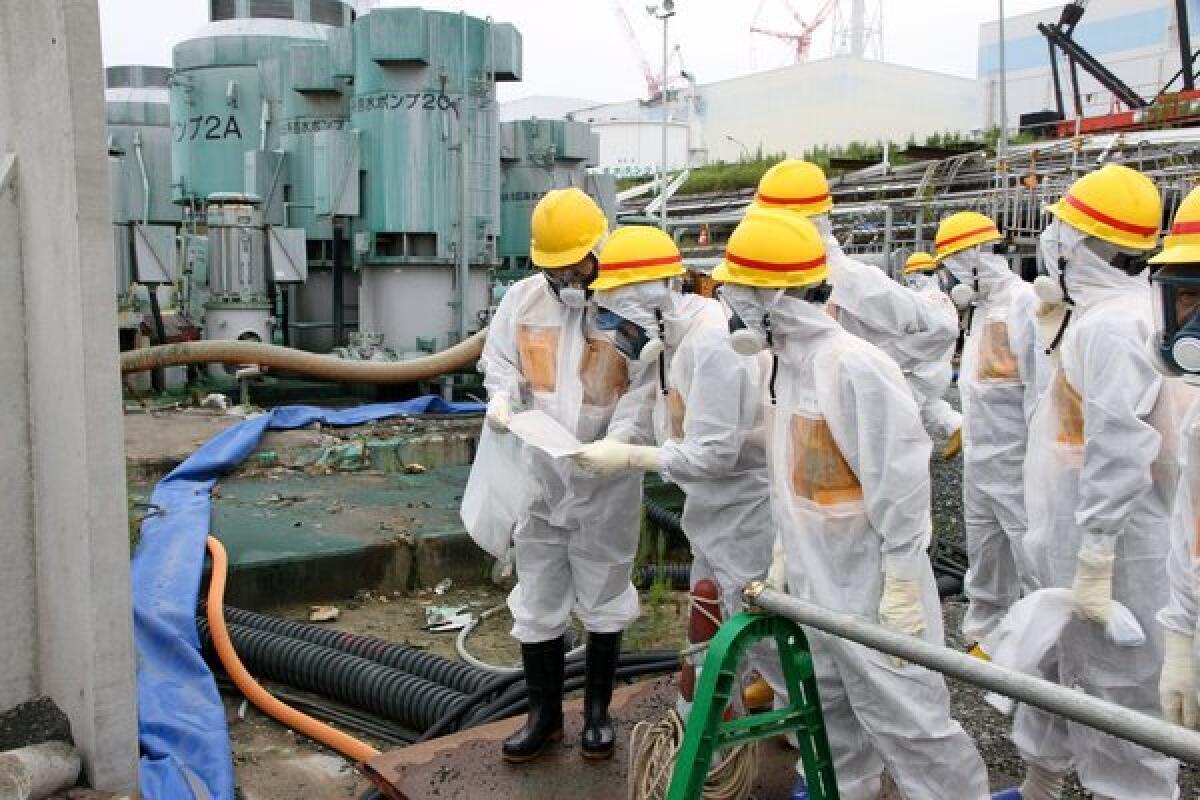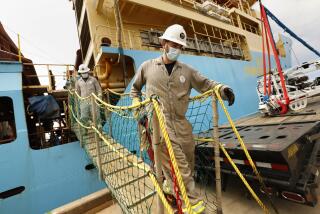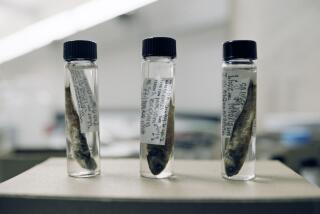Is our seafood radioactive, or is it safe to eat?

- Share via
Is our seafood safe to eat?
It’s a question that came up over the weekend during a panel discussion at the L.A. food event the Taste. And it’s one that has been asked repeatedly in the aftermath of radiation spills from Japan’s Fukushima nuclear reactor in the 2011 earthquake.
Tuna that swam from Japan to California have tested positive for trace amounts of radiation from Fukushima (“about 5% of the dose one would get from eating a garden-variety banana”), as the L.A. Times’ Eryn Brown reported in May. In June, scientists told West Coast seafood fans not to “freak out,” but the question about safety continues to spark concerns.
So, is radioactivity threatening our seafood? According to the scientists who are studying the issue, the short answer is no.
On Tuesday, I exchanged emails regarding that question with Ken Buesseler, a senior scientist in marine chemistry and geochemistry at the Woods Hole Oceanographic Institution. He’s been part of an international team studying the effects of the radiation leak since it occurred.
Buesseler, whose oceanography career started with studying the effects of Chernobyl on the Black Sea, has examined the spread of contamination from Fukushima into the Pacific. He and his team have helped analyze samples of water, sediment and animal and plant life.
The Woods Hole website has a great FAQ that address some of the most common concerns:
-- Although coastal fisheries within 100 miles of Fukushima remain closed, and contamination is a risk there, especially for bottom-feeding fish, “because of the dilution that occurs even a short distance from Fukushima, we do not have a concern” about radioactive contamination of fish off the West Coast of the U.S.
-- Some claim that migratory species of top predators such as Pacific bluefin tuna might be especially at risk, but Buesseler rejects that, saying that the radioactive elements the fish might have absorbed will be diluted from swimming in less-affected waters.
-- There is concern, Buesseler says, about the continuing leakage of some radioactive substances, such as strontium-90. “It is taken up by and concentrated in bones, where it remains for long periods of time.... If leaks of strontium-90 continue, this radionuclide could become a larger concern in small fish such as sardines, which are often eaten whole.” But at this point, levels are relatively low.
-- What about when ocean currents push irradiated water and debris to the West Coast, which is forecast to happen sometime this year? “Levels of any Fukushima contaminants in the ocean will be many thousands of times lower after they mix across the Pacific and arrive on the West Coast of North America sometime in late 2013 or 2014. This is not to say that we should not be concerned about additional sources of radioactivity in the ocean above the natural sources, but at the levels expected even short distances from Japan, the Pacific will be safe for boating, swimming, etc.”
-- Furthermore, “debris washed out to sea by the tsunami does not carry Fukushima radioactive contamination — I’ve measured several samples in my lab. It does, however, carry invasive species, which will be of serious concern to coastal ecosystems on the West Coast.”
For further reading, Buesseler recommends these articles: “Fukushima’s Radioactive Water Leak: What You Should Know”; “Latest Radioactive Leak at Fukushima: How Is It Different?”; “Radiation and Human Health”; and a special issue of Oceanus Magazine devoted to Fukushima.
ALSO:
New magazine on Asian cuisines
Got figs? Lucky you, now here’s what to do with them
National Bacon Day is over, but you can still celebrate
More to Read
Eat your way across L.A.
Get our weekly Tasting Notes newsletter for reviews, news and more.
You may occasionally receive promotional content from the Los Angeles Times.











